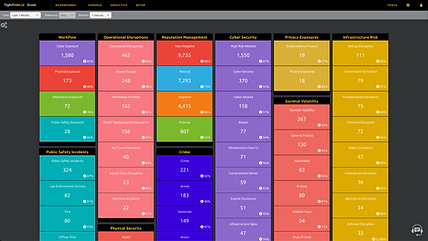
Misc Taxonomy for Filtering Noisy Content
Miscellaneous Content Taxonomy for optimizing digital intelligence processes. Understand strategies for managing non-critical information, noise reduction techniques, and best practices in maintaining focus on relevant OSINT data.
Overview of Miscellaneous Content Management
Miscellaneous Content Management in OSINT involves the identification, categorization, and appropriate handling of diverse, often non-critical information encountered during intelligence gathering. This discipline is crucial for maintaining focus on relevant data by efficiently managing the "noise" that comes with vast open-source information. DigitalStakeout supports this process by providing tools to categorize, filter, and prioritize content effectively.
Components of Miscellaneous Content Management
Content Categorization
This component focuses on accurately classifying diverse types of content to facilitate proper handling and filtering.
Noise Reduction
This aspect involves implementing strategies to minimize the impact of non-relevant information on the intelligence gathering process.
Relevance Assessment
This component deals with evaluating the potential value of miscellaneous content in relation to specific intelligence objectives.
Importance of Miscellaneous Content Management
Miscellaneous Content Management is vital because it:
1. Enhances Focus on Critical Information
Proper management of miscellaneous content helps in:
Reducing distractions from non-essential data
Prioritizing attention on high-value intelligence
Improving the signal-to-noise ratio in data analysis
2. Improves Operational Efficiency
By effectively handling miscellaneous content, organizations can:
Reduce time spent on processing irrelevant information
Streamline workflows by focusing on pertinent data
Allocate resources more effectively to critical intelligence tasks
3. Enhances Data Quality
Miscellaneous content management contributes to data integrity by:
Preventing the dilution of critical intelligence with non-essential information
Maintaining cleaner, more focused datasets for analysis
Improving the accuracy of automated data processing systems
4. Supports Compliance and Data Governance
This practice is crucial for:
Ensuring proper handling of diverse types of information
Maintaining audit trails for content filtering decisions
Supporting responsible data management practices
5. Facilitates Adaptive Intelligence Gathering
By providing mechanisms to handle varied content, this approach supports:
Flexibility in dealing with evolving information landscapes
Quick identification and integration of newly relevant data sources
Continuous refinement of intelligence gathering processes
Sample Misc Content Event Types/Descriptions
1. Spam Content
Identification and handling of unsolicited or irrelevant bulk information, including:
Automated filtering of known spam patterns
Assessment of content for potential hidden value
Logging and reporting of spam trends for future filtering improvements
2. Adult/Porn Content
Management of adult-oriented material encountered during OSINT operations, involving:
Automated detection and categorization of adult content
Implementation of appropriate access controls and viewing policies
Evaluation for potential intelligence value in specific contexts
3. Non-specific Content
Handling of general information that doesn't clearly fall into defined categories, including:
Initial assessment for potential relevance to intelligence objectives
Temporary categorization for further review if needed
Efficient processing to minimize impact on workflow
4. Benign Content
Management of content deemed non-threatening or irrelevant to current objectives, involving:
Quick identification and categorization of benign information
Streamlined processes for archiving or discarding as appropriate
Periodic reassessment for potential future relevance
5. Job Listing
Handling of employment-related content encountered during intelligence gathering, including:
Automated identification and categorization of job listings
Assessment for potential intelligence value (e.g., identifying organizational structures)
Efficient filtering to prevent clutter in primary intelligence feeds
Sample Courses of Misc Content Management Action/Recommendations
1. Content Filtering Strategy Development
Conduct a comprehensive review of current content categorization practices
Identify gaps in filtering mechanisms for miscellaneous content
Implement DigitalStakeout's advanced categorization tools to enhance content sorting
2. Noise Reduction Implementation
Deploy machine learning algorithms to improve automatic noise detection
Establish clear guidelines for human analysts in handling ambiguous content
Regularly update filtering rules based on emerging patterns in miscellaneous data
3. Relevance Assessment Optimization
Develop a scoring system for assessing the potential value of miscellaneous content
Train team members on nuanced evaluation of seemingly non-relevant information
Implement periodic reviews of filtered content to ensure no critical data is overlooked
4. Compliance and Ethical Considerations
Establish clear protocols for handling sensitive miscellaneous content (e.g., adult material)
Ensure all content management practices align with legal and ethical standards
Implement robust audit trails for all content filtering and categorization decisions
5. Continuous Improvement of Filtering Processes
Regularly analyze the effectiveness of miscellaneous content management strategies
Gather feedback from analysts on the accuracy and efficiency of filtering systems
Adapt content categorization models to evolving OSINT landscapes and objectives